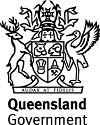Published Wednesday, 12 October, 2022 at 11:55 AM

Minister for Police and Corrective Services and Minister for Fire and Emergency Services
The Honourable Mark Ryan
IGEM Review receives Queensland Government support
The Inspector-General of Emergency Management’s review into the South East Queensland Rainfall and Flooding Event during February and March 2022 was today tabled in State Parliament, with the report finding Wivenhoe Dam was well managed, however there were some isolated examples of delays in Local Disaster Management Groups’ requests for Emergency Alerts.
The independent review made 19 recommendations which cover a range of areas of focus including:
- adding and/or clarifying existing guidance regarding flood risk and the use of the Emergency Alert system by responsible agencies;
- identifying options for strengthening the flood warning network;
- providing additional instructional support, training and exercising for users of the Emergency Alert system;
- use of the Australian Warning System for all nationally agreed hazards, supported by a community education program;
- increasing subscriptions to Local Government opt-in information services;
- assessing interagency information system operability;
- reviewing deployment protocols and information capture and
- reviewing emergency procedures for referable dams.
The Queensland Government is already working towards delivery of these recommendations, noting that three recommendations are directed at local government.
Minister for Police and Corrective Services and Minister for Fire and Emergency Services Mark Ryan thanked the Inspector-General Emergency Management (IGEM) Alistair Dawson and his team for the report.
“The Review is a thorough examination of the preparedness and response to the devastating events of earlier this year, where tragically 13 lives were lost and more than 300 people were evacuated,” Minister Ryan said.
“Our thoughts remain with the family and friends of those who lost their lives.
“Emergency services issued 94 emergency alerts campaigns, evacuated 331 people and completed 18,021 damage assessments, with an estimated social, financial and economic cost of $7.7 billion to Queensland.
“The 19 recommendations made by IGEM will help drive improvements for severe weather prevention, preparedness, response and recovery in the future.
I know Queensland Fire and Emergency Services (QFES) has already made this work a priority with the implementation of recommendations all underway and those recommendations with a completion date of 1 November 2022 on track.
“During the flooding event, there were some isolated examples of delays in Local Disaster Management Groups (LDMGs) requesting Emergency Alerts, however the vast majority of LDMGs have mature system, are well prepared and demonstrate good practice.”
Inspector-General Alistair Dawson said one of the IGEM’s critical, ongoing roles was to analyse and evaluate the effectiveness of disaster management arrangements.
“IGEM worked closely with stakeholders and the Queensland community to complete this review, while the review also considered previous IGEM and other relevant reviews. This included the Brisbane City Council 2022 Flood Review completed by the Honourable Paul de Jersey AC CVO KC.
“Upon its findings, IGEM identified Wivenhoe Dam was well managed, particularly around the timing of water release.
“When commencing this report, the IGEM review team consulted with community members from the 23 affected local government areas and other relevant stakeholders through 13 community forums and through inviting public submissions, of which the Office received 247.
“The report, its learnings and its recommendations reflect the Standard for Disaster Management in Queensland, identifying both good practice examples and opportunities for enhancement in Queensland’s disaster management preparation and response.”
QFES Acting Commissioner Mike Wassing said learnings from this review were an important element to the State Government continuing to innovate and provide the best standard emergency response to the Queensland Community in their times of need, but reiterated individual preparedness was crucial.
“QFES is committed to supporting a strong disaster management system. Given the impact of these events, it is important to ensure that changes to existing systems are purposeful, achievable, consulted on, well-executed and communicated widely. This will take time, but importantly, our state disaster management agencies are already identifying opportunities to build on existing good practice.
“QFES already has commenced looking at ways it can better support local governments to identify flood risk and the Queensland Reconstruction Authority is identifying options to ensure a best practice network of flood warning gauges across Queensland to inform flood warnings.
“More immediately, QFES is well positioned with our current preparedness and capability across the state for the upcoming severe weather season. In particular, the recent State Budget announcement has seen capability and system growth in the State Emergency Service, our Swift Water response, and investment in improvements in systems in the Queensland Emergency Operations Centre.
The report can be found here:
https://documents.parliament.qld.gov.au/tp/2022/5722T1608-66C6.pdf
Media Contacts:
Minister’s Office: 3035 8300
IGEM Media: 3029 8813
QFES Media: 3635 3310

